 Misconceptions
Misconceptions  Misconceptions
Misconceptions  Mysteries
Mysteries 10 Strange Unexplained Mysteries of 2025
 Miscellaneous
Miscellaneous 10 of History’s Most Bell-Ringing Finishing Moves
 History
History 10 Great Escapes That Ended Right Back in Captivity
 Weird Stuff
Weird Stuff 10 Fascinating Things You Might Not Know About Spiders
 Food
Food 10 Everyday Foods You Didn’t Know Were Invented by the U.S. Military
 History
History 10 Odd Things Colonial Americans Kept at Home
 Weird Stuff
Weird Stuff 10 Superstitious Beliefs That Once Consumed Entire Cultures
 History
History 10 Bizarre Friendly Fire Incidents in Military History
 Technology
Technology 10 Modern Technologies That Accidentally Imitate Ancient Magic
 Misconceptions
Misconceptions 10 Common Misconceptions About the Victorian Era
 Mysteries
Mysteries 10 Strange Unexplained Mysteries of 2025
 Miscellaneous
Miscellaneous 10 of History’s Most Bell-Ringing Finishing Moves
Who's Behind Listverse?

Jamie Frater
Head Editor
Jamie founded Listverse due to an insatiable desire to share fascinating, obscure, and bizarre facts. He has been a guest speaker on numerous national radio and television stations and is a five time published author.
More About Us History
History 10 Great Escapes That Ended Right Back in Captivity
 Weird Stuff
Weird Stuff 10 Fascinating Things You Might Not Know About Spiders
 Food
Food 10 Everyday Foods You Didn’t Know Were Invented by the U.S. Military
 History
History 10 Odd Things Colonial Americans Kept at Home
 Weird Stuff
Weird Stuff 10 Superstitious Beliefs That Once Consumed Entire Cultures
 History
History 10 Bizarre Friendly Fire Incidents in Military History
 Technology
Technology 10 Modern Technologies That Accidentally Imitate Ancient Magic
10 Genetically Modified Animals You Can Buy
It’s been 10 years since scientists finished mapping the human genome—so what have we accomplished since? Lots! In fact, we may have gotten a bit trigger-happy.
10 Designer Babies

The first batch of genetically modified babies were created in 2001. Out of the 30 babies that were born, 15 were found to have DNA from three different adults. Although having DNA from more than two sources can occur naturally (as in the cases of microchimerism and tetragametic chimerism), these 15 babies were created with a method called “cytoplasmic transfer,” which had been banned by the FDA. The method was initially developed to save female eggs that had been difficult to fertilize and was showing much promise—until tracking the growth of the genetically modified babies revealed that one of the babies had been diagnosed with pervasive developmental disorder, a classification of developmental disorders that includes autism.
9 Featherless Chicken And Bird-Flu Resistant Chicken
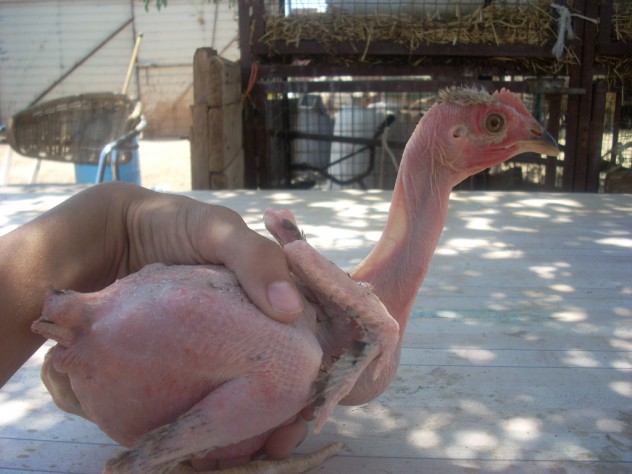
What you are looking at is man’s cruel joke on nature. In the name of economy and KFC-loving humans, scientists in Israel have created a prototype of a breed of featherless chickens that can save time on plucking, are more environmentally friendly, and in general significantly reduce the cost of raising them. The scientists claimed that featherless chickens are extremely safe because they are created by breeding a regular broiler chicken with a Naked Neck.
Despite the number of benefits featherless chickens will provide, there are some serious drawbacks to consider. Mother Nature wouldn’t give chickens feathers if she thought they were useless. The feathers on the chicken are there to protect chickens from parasites, harsh weather conditions, and overzealous cocks that can hurt the hen’s skin when mating.
8 Hypoallergenic Pets

What can you do when you are a cat or dog lover, but are extremely allergic to them? I guess you could accept your less-than-perfect immune system and settle with having a goldfish—or you could purchase a hypoallergenic pet. A company called Lifestyle Pets claims that they are able to breed hypoallergenic pets by selecting cats and dogs that have “naturally occurring genetic divergences” for breeding. This group of cats and dogs doesn’t produce the types of pet allergens (a total of four in cats and six in dogs) responsible for allergic reactions in humans. But with prices starting at $6,950, you might find you prefer owning a goldfish anyway.
It’s interesting to note that before Lifestyle Pets found the proper pets to breed, they actually turned to gene modification to produce their first batch of hypoallergenic pets. The scientists isolated the protein responsible for producing the allergens in cats and destroyed it with a method called “gene silencing.” As the name suggests, it can be a very torturous experience for the animal—and perhaps an unjust one, considering the pet owner could just vacuum more often and maybe take some antihistamines now and again.
7 Mostly Male Tilapia

Tilapia have been genetically modified to drastically reduce the time it takes for the fish to reach maturity, to make them larger, and to help them survive with less food. That’s all standard stuff for genetically modified animals, but there’s one tweak that’s largely unique to their species: tilapia farmers want their fish to be primarily male.
The reason has to do with their reproduction. Female tilapia protect their eggs through a tactic called “mouthbrooding” that involves holding the eggs in their mouth for an extended period of time. To avoid swallowing its own eggs, the female tilapias will not consume anything during this period, which obviously negatively impacts their size. For this reason, tilapia farmers prefer males.
6 Glittering Gold Seahorses
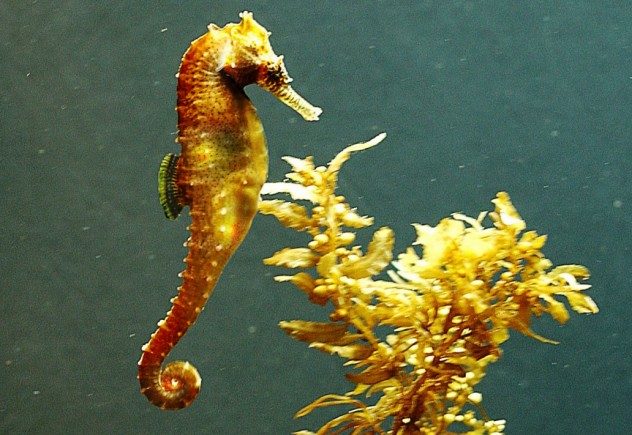
Forget about gold-encrusted phones, bacon sprinkled with gold, or gold-plated cars: if you really have the cash to throw around, you can now buy yourself a glittery gold seahorse.
These creatures are created by Vietnamese scientists and are the first ever genetically modified animal from Vietnam. Gold dust was mixed with jellyfish proteins, then inserted into seahorse’s eggs by using the “gene shooting method,” which has incredible potential uses. With more research and trials, gene shooting can potentially treat incurable human diseases, like diabetes, by replacing problematic DNA in the patient’s body.
5 Pharmaceutical Camels

Dubai scientists believe that the best way to cure genetic diseases is by modifying animals to produce curative proteins in their milk. But not just any animals—so far, the experiments have focused on camels. Why camels? Because they’re cheap: they are disease-resistant, able to adapt to many climates, easily maintained, and have an efficient food conversion ratio.
4 Sudden-Death Mosquitoes
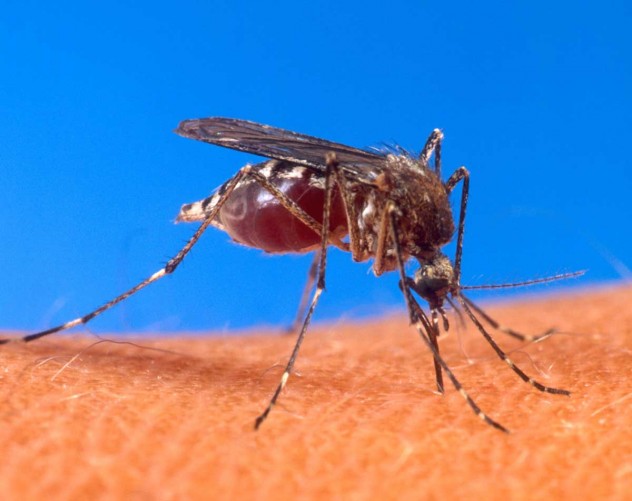
Each year, one million deaths are caused by malaria, and another 300 million people are infected—so it stands to reason that scientists should develop ways to end the fight against this disease. With the inspiration of fighting fire with fire, scientists have come up with malaria fighting mosquitoes. These types of mosquitoes have been genetically modified to develop resistance against the plasmodium parasite—making it near impossible to infect the host mosquito. But past experiences have shown that plasmodium parasites are able to quickly evolve and develop an immunity to anything that threatens to destroy them. So would it be better if scientists just killed all mosquitoes?
Funny you should mention that: a team of scientists have banded together to create a type of mosquito that are supposed to pass on a “sudden death” gene to their offspring, which will cause those baby mosquitoes to die of old age before they reach sexual maturity. However, the devastating ecological effect must be taken into consideration: if mosquitoes were eradicated, organisms like bats, which depend on mosquitoes for food would quickly face extinction as well.
3 Super Cows
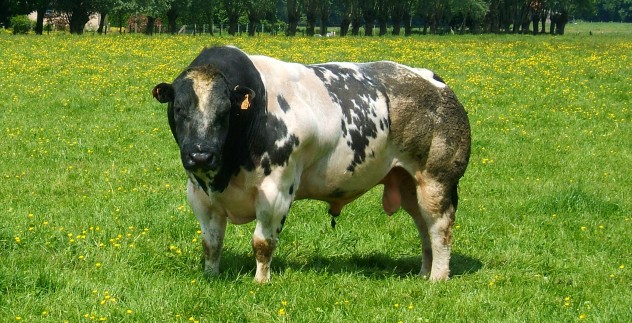
Herman the Bull, the first genetically modified bovine, was created in 1990 to humanize his calves’ milk, but we’ve come a long way since him. We now have cows that are less horny and resistant to mad cow disease and udder infections. We can even determine their sex or turn out a Belgian Blue.
Although the Belgian Blue was not created through genetic modifications, you can be forgiven for thinking otherwise. The Belgian Blue is a breed that has a defective myostatin gene (the gene that is responsible for muscle inhibition) that results in double muscling. Belgian Blues are said to have more lean meat and reduced fat content, which leads to significantly more health risks (and inbreeding) than other breeds and puts a premium price on these steaks.
2 Popeye Pigs
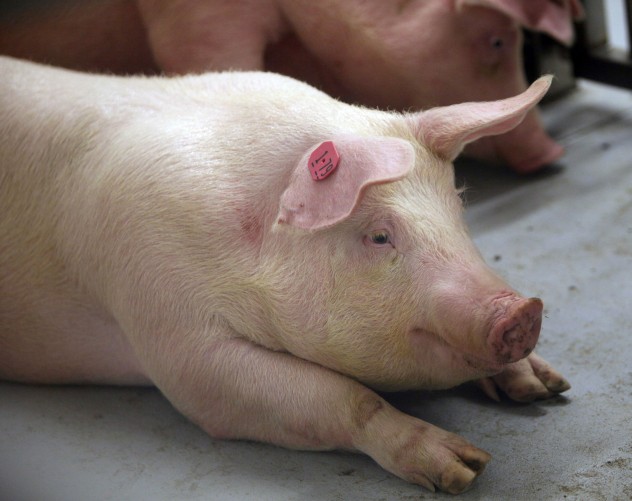
If there is one meat product that is preventing me from turning into a vegetarian, it will be bacon—which generally has a bad reputation in the health food community. But now might be the time for those health fanatics to take back their own words: scientists in Japan have genetically modified pigs that are both meat and vegetable!
Dubbed “Popeye Pigs,” these pigs have been inserted with a spinach gene that converts saturated fat into unsaturated fat (linoleic acid). Although the pigs have been cleared of any health complications, their announcement was met with public outcry, with many people wondering why shoppers aren’t happy eating vegetables instead of trying to mutate pigs into something they’re not.
1 Glow-In-The-Dark Cats, Sheep, And Worms
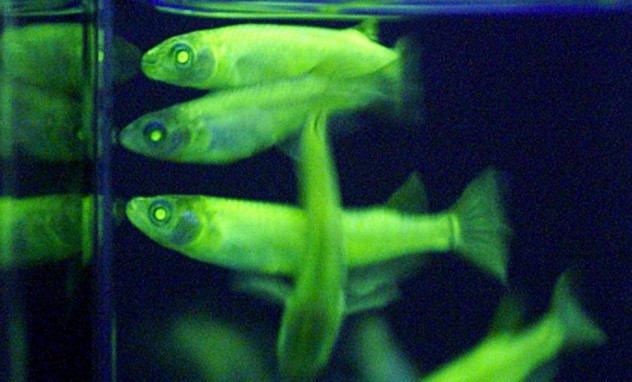
It seems like once the scientists figured out how to make glow-in-the-dark animals, they wasted no time in making everything within reach into a Halloween decoration. Although the cool factor is probably enough to start someone experimenting (one rabbit was created solely for art’s sake), there are actually other, nobler reasons for these strange-looking creatures.
For example, cats injected with the glow-in-the-dark gene are more resistant to feline HIV, which affects 500 million cats around the world. Scientists have also injected fish with glow-in-the-dark genes in order to track their migration. If you couldn’t care less about cats or the environment (what kind of monster are you?), then perhaps knowing that scientists are also using glow-in-the-dark animals to learn more about debilitating diseases, such as Parkinson’s and Alzheimer’s, will change your mind.
With all these noble causes, there will always be the odd one out, and in this case, it’s the glowing silkworm. Some were infused with glow-y powers by Japanese scientists in order to create exotic silk for expensive dresses.








